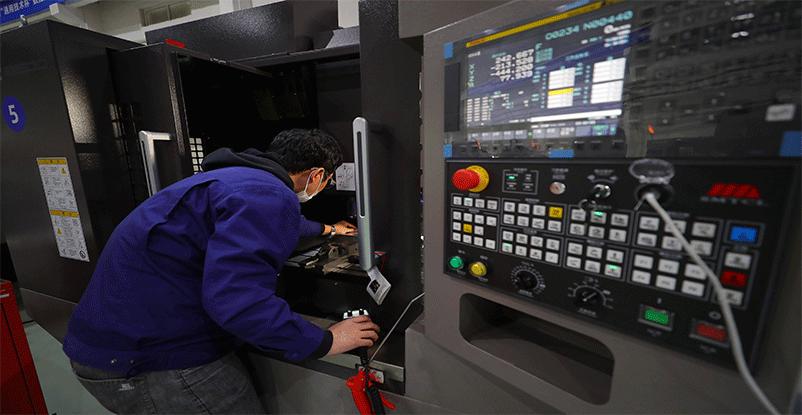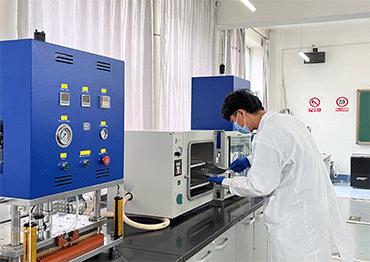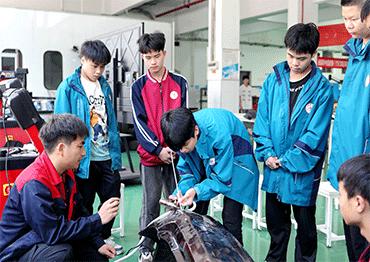A major bottleneck in domestic vocational education is the lack of integration with industries. Xie Yonghua, who has visited many enterprises in Nanjing and nearby cities, noticed a growing willingness among companies to cooperate with schools due to the government’s increasing emphasis on vocational education. However, for many vocational schools, the dilemma has not changed fundamentally. The core issue remains that enterprises have not seen obvious benefits from it.
Beijing Jingdiao College under NVUIT exemplifies successful school-enterprise cooperation. In 2018, Beijing Jingdiao Group, a manufacturer of computer numerical control (CNC) machine tools, sought to collaborate with NVUIT to train skilled professionals. CNC machines use computer software to control factory tools like grinders, lathes and routers for complex tasks such as 3D cutting.
Beginning in 2020, their partnership has generated at least 1 million yuan (US$137,600) in orders from downstream customers. Students can undertake an internship on the production line, gaining practical experience while earning an income. “What they learn on site is broader and deeper than classroom studies, ”said He Yanhui, director of Beijing Jingdiao College.
Both the school and the enterprises benefit from this cooperation. Beijing Jingdiao Group provides advanced CNC machine tools for free and handles maintenance and upgrading. It also regularly sends engineers to the school for daily teaching and even advises on students’ graduation theses. Around seven years ago, NVUIT bought an advanced five-axis CNC machine tool, but since no teacher could operate it, He Yanhui had to learn the skill elsewhere.
Their partnership also addresses the company’s challenges in hiring qualified talents. Ren Pan from Beijing Jingdiao Group’s Nanjing branch said their customers often struggle to find skilled operators for their machines. The collaboration helps cultivate talent for these customers in Nanjing, Ren said.
Wu Chen, a 2024 graduate in mechanical engineering, completed his graduation project at Beijing Jingdiao College, becoming proficient in programming and operating five-axis CNC machine tools. This experience led to a job recommendation at a downstream manufacturer.
To promote school-enterprise cooperation, NVUIT provides resources such as a 3,000-square-meter training base and a nearby space for Beijing Jingdiao Group’s Nanjing branch. The school also pays the company a 1 million yuan (US$137,600) service fee annually, provided their teaching and training requirements are met.
The revised Vocational Education Law of 2022 emphasizes the important role of enterprises in delivering high-quality vocational education and encourages their participation.
Kuang observed that some companies are active in the talent training process from the beginning, including curriculum planning, rather than participating only in the final stage of practical training.
But Xie Yonghua admitted that not all enterprises are enthusiastic. Currently, the job market favors companies, allowing them to freely pick employees with the skills they desire without needing to cooperate with specific schools.
Although central and local governments have introduced policies to boost school-enterprise cooperation, real incentives are few and far between.
“Enterprises need to see tangible benefits, such as getting access to qualified talent or tax exemptions,” Xie said.
Zheng Shaozhong believes the core issue is effectively aligning majors and talent cultivation with industry demands. At his school, graduates of metallurgical engineering and meteorology courses are highly sought after, with employers often securing them early. However, not all majors enjoy the same popularity, indicating the need for continuous alignment with industry needs.

 Old Version
Old Version



